"Sweet" drama "Fruit Biography 2" is online! There is knowledge at the top.
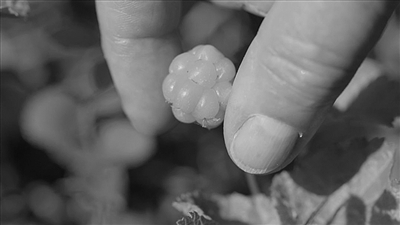
Cloudberry, Finland
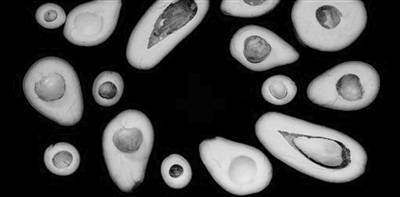
avocado
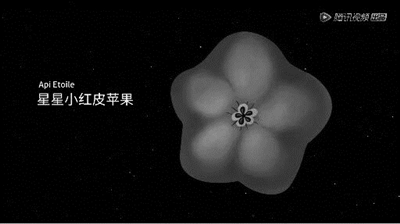
Xing xing Xiao hong pi apple
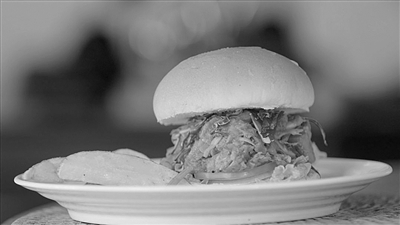
Jackfruit hamburger

Cactus fruit
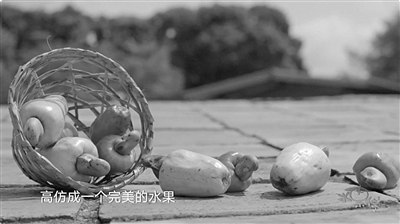
cashew
In recent years, domestic food documentaries have flourished, revealing the local cuisine with fireworks, as well as breakfast and supper, which have been subdivided into documentaries, one after another. Unexpectedly, fruit has also become the protagonist of the documentary. Last year’s "Fruit Biography" was called "the fruit on the tip of the tongue" by netizens, and it scored 8.7 points in Douban. Nowadays, under the background of rising fruit prices, the second season of Fruit Biography was launched. Looking at it, the reporter felt that these fruits were not affordable and available, but at the same time, they were found to be "too difficult", and some learned to "save themselves" in order to continue and survive; Some fortunately met human beings and avoided extinction. (Yangzi Evening News/Yangyan reporter Kong Xiaoping)
What?
Brazil berries and cloudberry, Finland can’t be bought online.
Biography of Fruits is the first documentary about fruits in China. Netizens affectionately call it a companion piece of online celebrity’s documentary A String of Life. "It’s too boring after watching the barbecue? Take a look at "Fruit Biography" to get tired of it. " Therefore, the "Fruit Biography" series is also called "domestic sweet drama".
There are 40 kinds of fruits in Fruit Biography 2. When the reporter saw the first episode of Brazil berries, he quickly searched where they were sold, and found that only processed jam was available. Brazil berries grow on the crown of palm trees 20 meters high in the Amazon rainforest, and it is almost impossible to pick them. And I was busy for half a day, and I couldn’t eat anything. The diameter of a Brazilian berry was between 7 and 10 mm, and the edible fruit only had a surface layer of 1 mm, and the rest were the stone … … Locals make jam to match with vegetables and fruits, or mix it with cassava flour to become staple food. Moreover, it is said that Brazil berry is rich in cellulose and unsaturated fatty acids, with low calorie and 20 times of antioxidant activity compared with blueberries, which can enhance immunity and is very popular among sports and fitness enthusiasts.
When I saw "cloudberry, Finland", I didn’t want to turn over my mobile phone. The documentary said that it grows in the Arctic Circle, and it can only be picked during the short extreme days of the year. In the film, two foreigners who went into the mountains to pick cloudberry were busy for a long time before they laid a bottom for the keg. The commentary is also in place, saying that it is "cold and needs a pollution-free environment and cannot be planted artificially".
What?
There are thousands of avocados.
Avocado is a well-deserved "online celebrity fruit" nowadays. It is one of the most popular fruits in supermarkets and e-commerce platforms. It is a frequent visitor to fitness meals, the protagonist of ins style and the source of inspiration for fashion circles.
However, I didn’t expect avocado to have thousands of varieties. "Fruit Biography 2" tells avocado from the perspective of Ken, a "fruit hunter" in Hawaii, USA. Ken used to be a chef. He was quite repulsive when he first ate avocado. Later, he fell in love with it, and even went full-time to Hawaii for avocado growth. In the past 40 years, he has only collected more than 400 varieties. In the lens, he picked avocados from many trees and found that the green of each variety is very different. There are many shapes, such as eggplant shape, palm size, egg size and white flesh … … And the taste is also different.
The documentary also showed how to eat a variety of avocados, and Ken also called a chef to hold an avocado taste contest. He named the avocados separately, and each chef scored them after tasting them, and finally ranked them according to the scores.
What?
The roots of Fuji apple trees are actually begonia.
"An apple a day keeps the doctor away." Most people actually don’t eat a few avocados a year, but most of the fruits they buy home every day will have apples. Although there are thousands of kinds of avocados, they will probably be defeated by apples. According to Fruit Biography 2, there were more than 20,000 kinds of apples in the world, and now there are more than 7,500 kinds.
For the sweet taste, foodies have domesticated those fruit trees with big and sweet fruits since the Stone Age, and changed the fate of apples through grafting. However, the sour wild apple varieties have gradually become extinct because they have not been favored by human beings, including the "Flower Apple of Kent" that hit Newton. Even if it is so famous, it has long since disappeared.
Do you know how Japanese Fuji apples, which are common in fruit stalls, come from? "Fruit Biography 2" introduces that it is a variety successfully bred by fruit farmers in Aomori Prefecture, Japan, with American Guoguang and Marshal Hong, and their roots are not apple trees, but begonia, which is simply "an apple over begonia"!
So you will find that even apples have become the most familiar "strange fruit": have you seen purple apples? What the hell is a fox apple? What’s the taste of the small red apple with stars?
What?
Carambola beer, jackfruit burger ≠ dark cuisine
After reading it for a long time, I finally saw two familiar fruits, carambola and jackfruit. The reporter was very pleased. But carambola can actually brew beer, jackfruit can also be used as a staple food, and some people have developed jackfruit burgers. The reporter couldn’t help wondering, is this a dark dish?
In the film, two Guangdong winemakers took a fancy to the sweetness and sweetness of carambola, and combined with the beer brewing technology, the brewed carambola beer looked very refreshing. However, because of its high sugar content and high protein, jackfruit is very qualified as a fruit. Unexpectedly, because of its high fiber content, immature jackfruit can become "fake meat" and be developed into a new food by human beings who love to eat. "Fruit Biography 2" presents a jackfruit burger, which is said to taste like meat as long as it is cooked for a long time. The reporter visually observed that in this era of pursuing healthy eating, it will soon join the recipes of healthy meals.
What?
Cactus fruit should also be a "new online celebrity"
When I saw the children in Fruit Biography 2 waiting to eat cactus fruit, the reporters felt very embarrassed. The cactus photographed in the film grows in the Yarlung Zangbo Grand Canyon, one piece of cactus land. Every September, pink fruit is covered with barbs, and it is not impossible to eat it happily. The locals in the film brush it back and forth with rattan and brush off the barbs. There is a scene in which a horse eats cactus fruit by himself. The local people laughed and said that there are often cows, horses and pigs who are thirsty and bite it rashly. As a result, they can’t eat grass because of their stinging mouth, so they are getting thinner and thinner, which is simply a "good medicine for losing weight at home".
The local people described this cactus fruit as refreshing as pitaya, soft and waxy as fig, and rich in polysaccharides, amino acids, pectin and trace elements, which can quickly restore physical fitness. No, a local man took his children to practice riding and gave them more than 10 meals. Cactus fruit is not difficult to buy. The reporter saw that there is news on the Internet that some merchants have added it as an ingredient in milk tea, and the taste is probably quite refreshing and delicious.
A lot of cold knowledge, fruits are really "too difficult"
In order to save themselves, cashew nuts learn to "imitate" cactus life "in two shifts"
Why did the reporter swallow his saliva and watch Fruit Biography 2 in one breath? Because it is not only a documentary about how delicious fruits are, but also the commentary is particularly witty and easy to understand, and it can also enrich knowledge, which makes people sincerely sigh: fruits are really "too difficult".
Some fruits have learned to "save themselves" in order to continue and survive in the long life of the universe.
For example, Brazilian berries are also racking their brains to survive. In order to spread their seeds better, they have evolved into the dark color that attracts birds the most! Let birds eat themselves, and then spread seeds through bird droppings.
And cashew nuts, which can be a cover-up. They grow fake pears that attract animals and "imitate" themselves into a fruit, while the real seed, cashew kernel, is hidden under the fake fruit, with a hard shell and secretes substances that can corrode the skin to protect the seeds.
Cactus is not easy either. Every day, you have to "stay up late" and live a life of "two shifts". Usually, plants carry out photosynthesis during the day, but if the cactus with water reserves opens its stomata during the hot day, it will be suicidal, so it has to "absorb light" during the day and "inhale" at night.
Thanks to the help of human beings, avocado and papaya got rid of the extinction crisis.
But in the harsh natural selection, sometimes it is not enough to rely on the fruit itself. Although humans love to eat fruit, they can also help.
Just now, when the reporter saw the scores of the avocado contest, he was amazed. It turned out that the competition in the avocado industry was so fierce, but in fact, it was almost extinct. It turns out that avocado has a history of tens of thousands of years on earth, but its size and seeds are too big for ordinary birds to hold, and it has become a problem to spread seeds. At that time, it was the staple food of the ground sloth. In order to adapt to it, the ground sloth even evolved a special stomach, so that the stone of avocado could be completely excreted. Later, the ground sloth unfortunately became extinct. Fortunately, avocado met human beings about 6000 years ago, and only under the protection of human beings did it escape the disaster of extinction. In order to reflect this passage, the documentary is represented by cartoons, and the ground sloth looks particularly cute.
There is also papaya. There was an extinction crisis of papaya in Hawaii. Fortunately, human beings created a net room to resist the invasion of aphids that brought this virus and successfully saved the life of papaya.
Reporter interview: The "fruit hunter" who collects exotic fruits is also the main force.
To sum up, Fruit Biography 2 conveys many levels of content. Su Lei, the director of Fruit Biography 2, said in an interview that Fruit Biography 2 tells eight theme stories of "running-in, collision, getting along, transformation and transformation between fruits and themselves, nature and human beings", presenting a "natural wisdom show" with temperature, but also reflecting the interactive relationship between human beings and fruits.
It is worth mentioning that the reporter saw that many netizens drooled and asked if some of these "exotic fruits" would be introduced. In this regard, Su Lei said with a smile, in fact, there were a lot of "goods" in the first season. Among them, chocolate oranges and finger oranges produced in Australia and known as "caviar in fruits" were quickly introduced by domestic e-commerce. This time, the film crew traveled to dozens of countries, including Asia, Africa, Europe, Oceania, Kenya’s indigenous tribes, and Brazil’s mysterious rainforest, with many novel fruits behind them. Nowadays, e-commerce has such a keen sense of smell that if some fruits in the second season are suitable for introduction, there should be some.
Regarding how to collect these exotic fruits, Su Lei said, just like Ken, the American "fruit hunter" mentioned in Fruit Biography 2, the program group consulted many botanists and professors, and also consulted many "fruit hunters" at home and abroad to help provide clues. "Nowadays, many e-commerce platforms have professional buyers abroad. In fact, fruits are also a kind of professional buyers, and they are also fruit hunters."
Su Lei told reporters that there are also "fruit hunters" in China. In the first season, Yang Xiaoyang, a "fruit hunter", helped to find the Malaysian "water coconut", which is an ancient species left over from the Quaternary glaciers. Under the hard shell of the water coconut, it is soft and crystal-clear pulp, which tastes like jelly pudding.
In addition, she also said that "Fruit Biography 2" is also technically "painstaking". 4K cameras and large aerial photography have been "routine operations", and technologies such as high-speed photography, time-lapse photography, macro photography and shed photography have enabled the nuanced parts of fruits to be displayed. For example, in order to show the hard "armor shell" and thick flesh of Indian jackfruit, microphotography was used. With the help of advanced photography technology, the audience further felt the charm of fruit. (Kong Xiaoping)